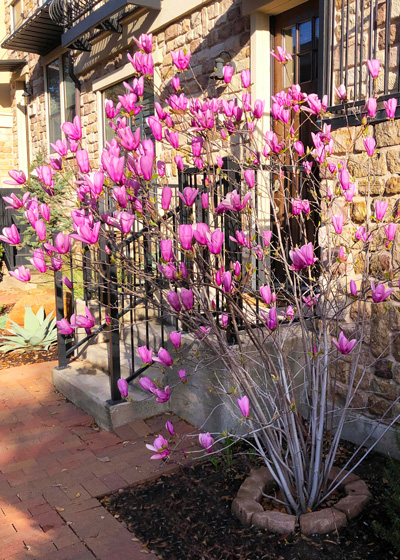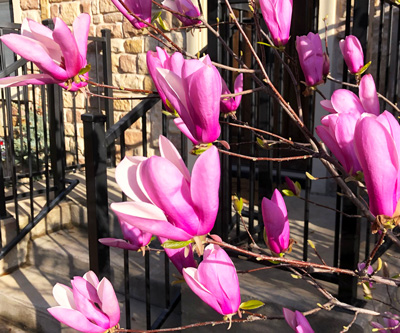A magnolia of a different sort
Don’t call this baby a “tulip tree.” If you ask for one of those, you’ll be woefully disappointed by something entirely different (Liriodendron tulipifera).
And if you just say you want a “magnolia,” you’ll probably get the stately southern magnolia, Magnolia grandiflora.

If you’ve seen this lovely plant in bloom and you want one for yourself, you need to ask for a “saucer magnolia,” Magnolia x soulangeana. It’s a hybrid that was introduced 200 years ago.
Unlike the more familiar southern magnolia that’s the trademark tree of the South, saucer magnolia is deciduous and its flowers have varying shades of purple and pink mixed onto its white petals. The closely related and newer Jane hybrid has deeper color in its petals.
What you need to know to grow it…
Saucer magnolias are a bit more challenging than southern magnolias. You must meet their needs or they won’t succeed:
• Highly organic, consistently moist and acidic planting soils.
• Afternoon shade, especially from I-45 west. The farther west you go in Texas, the less suited they are.
• Similarly, the farther south you go, the less satisfied they will be with the prolonged summer temperatures. They like colder climates.

• Their buds develop with the first warm spell of late winter. Plant where air circulation is good so frost won’t be able to form on the plants as they start to bloom.
• Feed with a high-nitrogen fertilizer soon after your saucer magnolia finishes blooming. Add iron with a sulfur soil-acidifier as needed to correct iron deficiencies during the growing season. Keep iron off surfaces that could be stained.
• Any pruning that might be needed should be done immediately after the plant finishes flowering.
